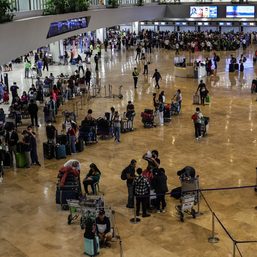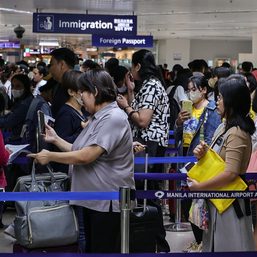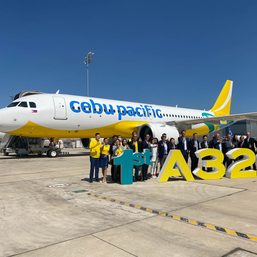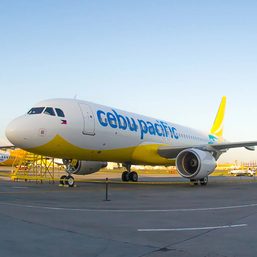SUMMARY
This is AI generated summarization, which may have errors. For context, always refer to the full article.

MANILA, Philippines – A consortium of the Philippine’s biggest conglomerates has bared its plans for a P267-billion rehabilitation program for the Ninoy Aquino International Airport (NAIA).
The group behind this push is the Manila International Airport Consortium (MIAC) – composed of Aboitiz InfraCapital, AC Infrastructure, Asia’s Emerging Dragon Corporation, Alliance Global-InfraCorp Development, Filinvest Development Corporation, JG Summit Infrastructure Holdings Corporation, and Global Infrastructure Partners.
MIAC made the bold claim that it could double the declared capacity of the country’s main gateway from 31 million passengers per year to around 70 million in the long run.
So what do the terms of the deal look like? Here’s a breakdown of the P267-billion investment:
- P57 billion upfront concession payment – reportedly the largest upfront concession payment for a public-private partnership (PPP) in the country’s history
- P57 billion committed capital for rehabilitation in the first five years
- P154 billion in capital investments for the next six to 25 years
In return, the consortium will have 25 years to run the airport and make a profit from its investment – far longer than the 15 year-concession in the government’s solicited proposal.
MIAC said that the longer concession period is necessary for a “comprehensive and extensive rehabilitation” – and to recover its hefty investment. It also said that this would lower the costs to passengers, as it could spread fee hikes over a longer period.
MIAC also claimed its project would generate P280 billion for the government in taxes and shared revenue, and another P258 billion in “net economic benefits,” which include job creation.
And the project could boost the airport’s capacity ahead of a resurgence in air travel.
“2024 is likely to be the busiest year on record for air passenger transport – higher than the numbers we saw pre-COVID. Without making a difference now, if you think NAIA is bad this week, imagine how poor the experience would be in 2024-25,” Adrian Witherow, a partner at Global Infrastructure Partners, said in a press conference on Monday, June 19.
In 2019, NAIA had already handled more than 48 million passengers, far above its maximum declared annual capacity of 31 million passengers. By 2028, it’s projected that more than 55 million passengers would be passing through NAIA every year.
What will the improvements look like?
Because of the lack of space in NAIA, the consortium will look to make operations more efficient rather than add more runways. It plans to build more rapid exit taxiways, staging points, spaces for passengers, and aircraft parking.
If approved, the project will proceed in three phases.
For phase 1, which will cover the first two years, MIAC will be chasing “quick wins” by boosting the airport’s annual capacity to 54 million passengers – an improvement of around 23 million passengers. This will include process improvements and optimization, upgrades to the airfield, and renovations to the airport facade and landscaping.
The next phase, which will last until 2028, aims to increase annual capacity of up to 62.5 million passengers through the expansion of terminals 2 and 3, creation of more taxiways and waiting bays, and improvements in cross-terminal transportation.
Phase 3, which will stretch into 2048, will focus on long-term projects related to the expansion of terminals 1 and 2 and further upgrades to the airfield and runways. This hopes to raise annual capacity to as much as 70 million passengers.
Will passengers face higher fees?
MIAC did not disclose how much it would hike airport fees, but it did admit that it would raise the passenger facility charge (PFC) at the airport.
“We do have plans to increase the PFC but linked to certain deliverables and timeframes within the concession,” Philip Iley, a partner at Global Infrastructure Partners, said during the press conference.
The consortium, however, gave assurances that it would not raise NAIA’s PFC to levels higher than those in the Mactan-Cebu International Airport or Clark International Airport. MIAC said that it would discuss the changes to the terminal fees “in due time.”
What about the government’s solicited proposal?
Currently, MIAC’s proposal is still being reviewed by the Department of Transportation (DOTr), which received the consortium’s unsolicited proposal on April 27.
But MIAC may not be the only group to put a proposal forward. The DOTr has also prepared a solicited PPP proposal for NAIA’s rehabilitation, which is currently pending approval from the National Economic and Development Authority (NEDA) board. Here’s what the terms of the project would look like:
- P30 billion upfront concession payment
- P2 billion annuity payments
- Revenue sharing between the private concessionary and government
- Concession period of 15 years
Should it push through, other companies will also have a shot at the NAIA rehabilitation project. And if the terms are right, the DOTr said that it could proclaim an award by the first quarter of 2024.
– Rappler.com
Add a comment
How does this make you feel?
![[Vantage Point] The urgency of a NAIA facelift](https://www.rappler.com/tachyon/2023/06/TL-urgency-NAIA-facelift-June-9-2023.jpg?fit=449%2C449)









There are no comments yet. Add your comment to start the conversation.